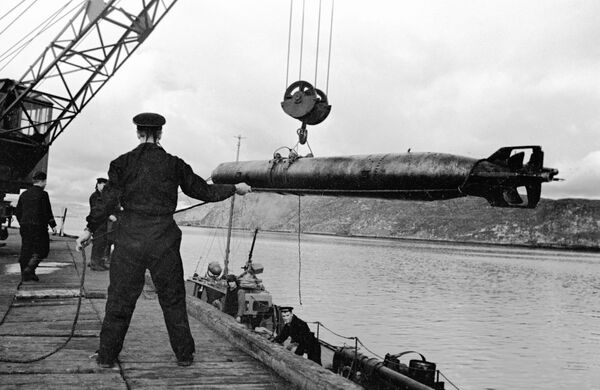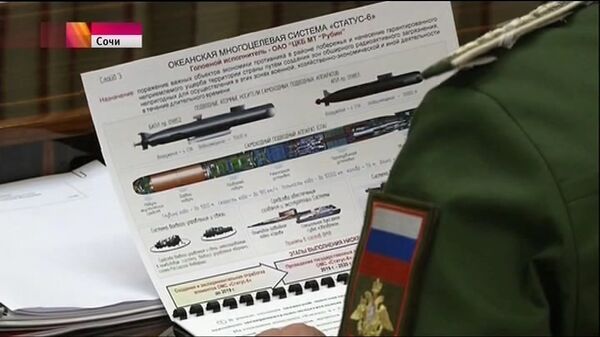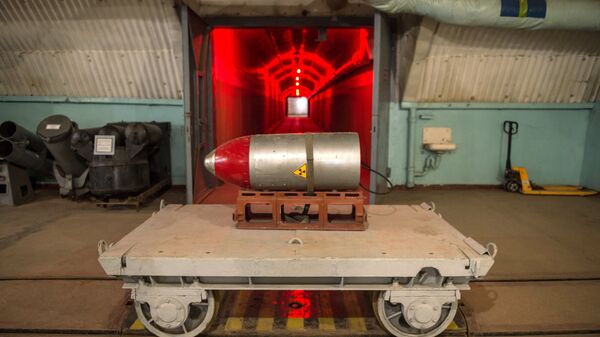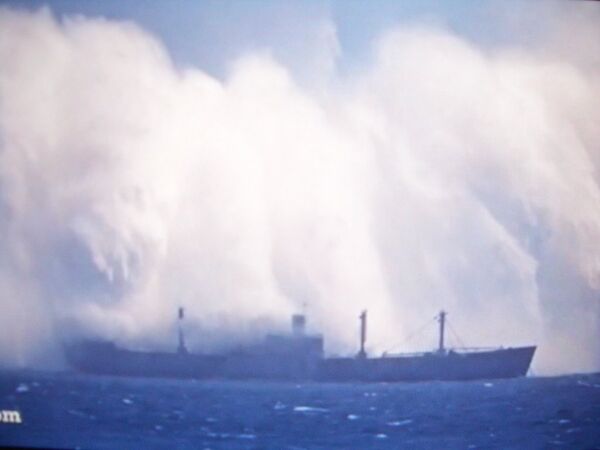On October 10, 1957, the S-144, a Soviet Whiskey-class diesel-electric submarine, fired a nuclear-armed torpedo at a mock fleet near the Novaya Zemlya archipelago in the northern USSR. Detonating 35 meters below the surface, the 10 kiloton explosion destroyed two decommissioned destroyers, two subs and two minesweepers.
"Submarines were another matter," military observer Andrei Stanavov wrote in his piece for RIA Novosti. "They performed well during the Second World War, were capable of stealthily closing in on enemy shores, and inflicting a powerful and devastating blow to enemy ports and infrastructure." The USSR's Navy also had the benefit of having amassed a large number of experienced submarine commanders during WWII.
T-15 vs. T-5
The Soviets' first foray into creating a nuclear-armed torpedo was the T-15, development of which started in 1951. Designed to be carried by Project 627 'Kit' ('Whale) subs, the USSR's first nuclear-powered attack subs, the massive, 1,550 mm caliber T-15 was over 20 meters long and weighed 40 tons. In the event of war, the T-15 would carry out attacks on US coastal facilities, seaports, naval bases and coastal cities.
Work on the T-15 began almost parallel to testing of the world's first hydrogen bomb – the RDS-6s (which US intelligence nicknamed the 'Joe 4'), which was successfully tested in August 1953. Developers presented their design to the Navy two years later.
The fleet was less than thrilled, according to Stanavov: "The massive torpedo launcher tube took up one-fifth of the space of the entire sub, effectively turning it into a one-shot weapon. Furthermore, there were justifiable questions about the torpedo's range and speed, leaving much to be desired."
As a result, engineers focused their efforts on the construction of a more modest weapon – the 533mm caliber T-5 torpedo, equipped with the RDS-9 tactical nuke. Their size allowed the weapons to be carried by ordinary Soviet subs.

The T-5 was first successfully tested in September 1955 at Novaya Zemlya using a 3 kiloton warhead. That test was not carried out directly from a submarine, but rather using a minesweeper, which lowered the torpedo into the water, and exploded it from a depth of 12 meters.
100 Megaton Mega-Torpedo?
Some years later, after the testing of the RDS-220 Tsar Bomba 57 megaton hydrogen bomb in October 1961, nuclear physicist Andrei Sakharov voiced the idea of creating an even more powerful, 100 megaton device, capable of being deployed in a submarine torpedo.
"After the testing of [the Tsar Bomba] I was concerned by the fact that there was no good carrier system for it," Sakharov later wrote in his memoirs. "Bombers don't count; they can be easily shot down. And so in the military sense, our work was for nothing. I decided that a large torpedo launched from a submarine would be an effective carrier. I envisioned the creation of a direct flow nuclear jet engine for it. The targets for the weapon would be enemy ports, launched from a distance of several hundred kilometers."
The sub-launched surface-skimming torpedo idea proposed by the academic was never realized in his own time, and would lay dormant, and forgotten, for half a century. In the meantime, the US developed its own tactical nuclear torpedoes, including the Mark 45 and Mark 48.
Mysterious New Russian Creation
In the 60s and 70s, as the superpowers' technical capabilities improved and the USSR reached nuclear parity with the USA, the concept of nuclear torpedo-based was gradually phased out and replaced by ICBMs and more and more advanced missiles launched from nuclear subs and bombers.

The weapon has a suspected range of 10,000 km, a maximum depth of 1,000 m, and a top speed of up to 100 knots. Western media reports also speculate that the weapon is armed with cobalt-60, and that following detonation would contaminate broad swathes of enemy coast lines.
It is rumored that Status-6 system will be carried on specially-equipped Project 949 Granit and Project 09851 Khabarovsk submarines fitted with special docking nodules on their underside. Late last year, the Pentagon confirmed that the Status-6 project was real, and that it had undergone tests in November 2016 from aboard a Sarov-class sub.
Experts say that the weapon's main advantage is its immunity to all existing and prospective US missile defense systems. The weapon's ability to cause unacceptable levels of damage to the enemy and to bypass US missile defense systems being deployed along Russia's borders would make highly effective as a deterrent tool.





